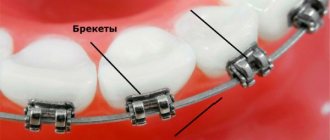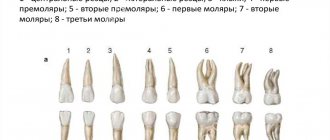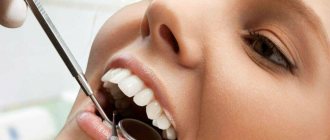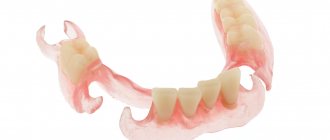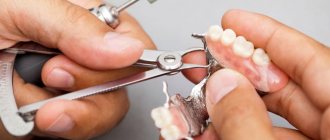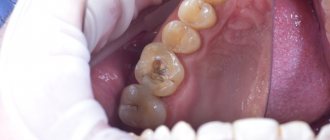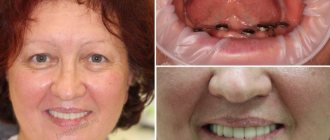Medicine is an area in which modern technologies have literally revolutionized in recent years. Dentistry, being one of the most knowledge-intensive areas of medicine, can serve as ideal proof of this. The changes that became possible thanks to the latest technologies have affected almost all its areas - diagnostics, treatment, prosthetics, prevention. New drugs and materials, research methods and computer modeling have become firmly established in dental practice. The most notable breakthroughs in this area include:
- the use of computer technologies in the process of diagnosis, treatment and dental prosthetics, digital radiology;
- use of laser in the treatment of oral diseases;
- the use of ozone to treat affected areas of the tooth;
- sanding with air;
- the use of new methods of pain relief in treatment and prosthetics;
- use of the latest materials for the manufacture of fillings, dentures and dental crowns.
It is worth talking about each of them in more detail.
Application of computer technology
Periodontitis diagnostic system “FLORIDA PROBE” (USA)
Today, diagnosis, treatment, and dental prosthetics are unthinkable without the use of one form or another of computer technology. Special computer programs are capable of simulating the patient’s oral cavity, which allows the doctor to more effectively make a diagnosis, select the type of therapy and prosthetics, and prescribe recommendations for the patient. And the patient gets the opportunity to visually familiarize himself with the condition of his teeth and better understand what their treatment and prosthetics will consist of.
Intraoral video camera
One of the most recent achievements is the so-called neuromuscular dentistry, which studies the neurophysiology of the oral cavity and the characteristics of the patient’s jaw movement and the activity of the masticatory muscles. It is quite obvious that obtaining and processing this kind of data is impossible without sophisticated computer technology. Also, in the country's leading clinics, programs are used that study the patient's facial expressions. Together, this allows the dentist to use a full animated model of the oral cavity, displayed on a computer display, where he can rotate the three-dimensional image in any direction and view it from different angles.
The intraoral camera is another new product that significantly facilitates the doctor’s work. The device is a microscopic video camera that is placed in the patient’s mouth and transmits an enlarged image to a computer screen. As a result, both the doctor and the patient have the opportunity to examine the condition of the teeth and gums in great detail. Sometimes, with the help of such a camera, a doctor can see details that even an x-ray cannot show him.
Acry Free - devices that do not chafe
The latest dental prosthetics eliminate the use of hard plastic during the manufacture of removable systems. The dental clinic offers clients designs made from soft and flexible materials. They are elastic and ensure a snug fit of the frame; they fit perfectly in the mouth even without the use of special fixing agents. What is important is that they do not rub or irritate the mucous membranes.
The new generation of removable products is called Acry Free. If we compare them with nylon predecessors, they hold their shape better, do not stretch, do not absorb food odors and do not change their color. Allergic reactions are excluded during their use. The high level of strength of the materials used in the production of Akri Free allows them to chew even hard food without fear of breakage. Getting used to soft systems is much easier. That is why today they are increasingly chosen by people who want to wear removable devices.
Laser Application
Nowadays, a very wide range of problems are solved with the help of lasers. Here are just some of the areas of its application:
- diagnosis and therapy for caries;
- treatment of periodontitis and pulpitis;
- removal of tumors of various nature;
- elimination of increased sensitivity of teeth;
- treatment of bleeding gums;
- acting as a scalpel during surgical procedures;
- complete disinfection of the oral cavity.
Laser therapy has a number of advantages over traditional methods of treatment:
- The laser provides 100% disinfection for all types of operations.
- There is no risk of bleeding when using it.
- All procedures are absolutely painless.
- Minimal traumatic effect on tissues, which contributes to their good regeneration.
This method has virtually no disadvantages. The only one of them can be considered its high cost today.
New generation clasp structures
The clasp design is based on a fairly rigid metal arch, and the fastening elements are clasps, attachments or telescopic crowns. Such orthopedic systems are prescribed only in cases of partial absence of teeth, since supporting elements are necessary for their fixation. They are more compact and convenient, durable and reliable. If we are talking about the upper jaw, then there is another undeniable advantage - the absence of a massive palatal bridge, which often causes a gag reflex in patients and distorts the taste of their favorite dishes. Separately, it is necessary to highlight the splinting clasp structure with “claw-shaped” processes, which are designed to fix each loose tooth.
The most popular and affordable option for clasp prosthetics is to fasten the structure using clasps - metal hooks that cover the supporting elements and thus ensure reliable retention of the system in the mouth. There are also models with micro-locks (attachments) - the system literally snaps into place. But to install the device on telescopic crowns, you will have to grind down the living supports, but you don’t have to worry about the aesthetic side of the issue.
Read more about clasp solutions in our special article.
Use of ozone
Ozone is used mainly for caries. This is also a painless modern method that allows you to completely eliminate the use of a drill. The essence of the procedure is to completely disinfect the affected area of the tooth. After treating the tooth with ozone and destroying all pathogenic microorganisms, its surface is coated with an enamel-restoring composition. The entire disinfection procedure takes no more than half a minute. The advantages of this method:
- there is no need to use a drill to penetrate the affected area of the tooth;
- high speed of operation;
- complete disinfection;
- painless operation, which makes the use of ozone especially popular in pediatric dentistry.
The disadvantage is that its use is not always possible. There are deep dental lesions when it is impossible to get to the desired area without a drill.
Dioxide dentures
Until recently, the main materials for the manufacture of dental crowns (the visible part of dentures, the one that actually looks like a tooth) were ceramics, metal-ceramics and metal-plastic (metal itself became a thing of the past in the 2000s). However, the market is already increasingly being captured by a new material that is stronger and more durable than metal-ceramics, and just as aesthetically impeccable as ceramics - zirconium and aluminum dioxide. Its properties make it possible to create both beautiful and durable crowns, which, although they are now the most expensive on the market, fully justify their price with convenience and durability.
Air sanding
In modern dentistry, there are different ways to replace the drill when treating affected areas of the teeth before installing a filling. One of them is the use of air to grind the tooth surface (microabrasive processing). With air, microscopic abrasive particles are supplied to it, which grind the tooth, removing the affected parts of the tissue. The method is characterized by high precision directed air flow, which helps protect nearby tissues from damage. This method is recommended for use in the early stages of caries.
ROOTT implant system
The Rutt system includes more than a hundred different implants. This allows materials from a single manufacturer to carry out any type of artificial root implantation. Rutt System implants can be fixed into the jawbone using dental cement, multi-unit or ball-shaped attachments.
The basal implants of the ROOTT system are structurally a single piece with an adapted abutment. The surface of these implants is perfectly smooth, which virtually eliminates the deposition of bacteria. Moreover, such implants are implanted very quickly due to deep threads. Finally, such artificial roots can be installed immediately after the removal of a damaged tooth. Advantages of Rutt system implants:
- minimum cases of rejection;
- ease of installation;
- no contraindications for patients with HIV, AIDS, hepatitis and diabetes;
- installation is allowed for heavy smokers
- the ability to implant roots in case of periodontal diseases.
Modern methods of pain relief
Electronic automated anesthesia system “SLEEPER ONE” (France)
One of the greatest achievements in the field of dentistry has been the invention of new methods of pain relief. Anyone who has had problems with teeth knows that the main issue for the patient has always been the possibility of effective pain relief. For many, fear of painful procedures has become the main reason for refusing dental treatment, leading to disastrous results. Today, not only new treatment methods that do not require anesthesia at all, but also modern methods of pain relief help to overcome this problem.
Among the medications, it is worth noting the newest drugs that have replaced the usual novocaine and lidocaine. Their effect is many times stronger and does not give side effects. In addition to medications, other new means are now being used. One of them is sedation. This is a type of anesthesia in which the patient is not completely immersed in sleep with a complete loss of consciousness. The state of sedation can be called superficial sleep, when the patient is conscious, but with an altered pain threshold and reduced anxiety. The drugs necessary to achieve this state are introduced into the body in the form of a breathing mixture (breathing mask), or in the form of an intravenous infusion. The method has much fewer contraindications and side effects than general anesthesia.
Prosthetics
Previously, the process of installing crowns was painful and lengthy. The crowns were noticeable and spoiled the appearance of a person. The advent of metal-free ceramics, special scanners, tomography and 3D printers have significantly improved the situation: now artificial teeth do not differ in appearance from real ones. A three-dimensional photograph of the old tooth is first taken, which allows you to accurately create the appearance of the new ceramic one. After this, the prostheses are made with the highest quality and very quickly on special machines and are installed almost painlessly.
Latest materials
ICON technology
Most of all, the latest materials are in demand, of course, in prosthetics. However, today they play a huge role in dental treatment (in particular, in fillings). Innovative composite materials are used when placing fillings. The use of many of them allows you to simultaneously replace drilling a tooth with a drill and fill voids in damaged tooth tissue. Often, the use of such techniques allows you to perform all the necessary manipulations for the treatment of caries in one visit.
A popular method of such treatment is Icon or liquid filling. Its essence lies in the fact that the light-composite material is applied to a specially prepared diseased tooth and penetrates into its structure. The procedure is repeated 2 times. Hardening of the substance that has impregnated the tooth tissue occurs under the influence of light. This way the affected area is sealed. At the end of the procedure, the tooth is polished, and the filling site becomes indistinguishable on its surface.
A similar technology is used when installing a photo seal. A composite material is also used here, which, under the influence of ultraviolet light, hardens inside the tooth and can take the desired shape. The method is also widely used to restore lost areas of teeth and chips on fillings, as it is durable and allows you to build up any desired volumes layer by layer.
Dental implantation
Implantology is also developing rapidly. Implantologists around the world annually present their ideas at symposiums and congresses, many of them are gradually being implemented in life. If previously dental impressions were made to make a prosthesis, then with the advent of 3D printers and ultra-modern scanners, as in prosthetics, the technology has acquired guaranteed precision in the manufacture of implants and short operating times. The patient will not feel any discomfort with the new “teeth”, since the implants are exactly like natural teeth in shape and color. Forget about removable dentures!
Implants with tapered abutment connection
Such structures are non-demountable. Their conical abutment ensures uniform load over the entire area of the implant, which dramatically reduces the likelihood of root loosening while chewing solid food. Such implants can be installed below the level of the cortical bone, in the area of which there is very little blood circulation.
The advantages of this technology are:
- monolithic design;
- uniform load distribution over the entire area of the implant;
- impossibility of penetration of pathogenic microorganisms to bone tissues:
- fast and very tight implantation of the implant into bone tissue;
- the technology does not interfere with normal blood circulation in the oral cavity;
- natural appearance;
- long service life.
Enamel destruction
Pathology is usually caused by a carious process. Bacteria in the oral cavity disrupt the acid-base balance, which changes the composition of the enamel. The cause of demineralization can be an incorrect diet when there is a deficiency of calcium, phosphorus and fluorine in the body. And also due to chronic diseases associated with inability to absorb calcium and metabolic disorders.
The destruction of the tooth surface can be stopped by a remineralization procedure. But only if the hard tissues of the tooth are not damaged. That is, caries is at the initial stage.
The dental treatment procedure includes:
- Professional cleaning, removing soft and hard plaque.
- Treatment of the surface of teeth with special compounds containing calcium (8-10%).
- Installation of a temporary mouth guard with therapeutic gel (sodium fluoride, calcium hydroxide).
The course of enamel restoration includes 7-10 sessions, depending on the condition of the teeth. The procedure takes no more than half an hour, is absolutely safe and painless.
Smart toothbrushes
The “smart” toothbrushes that have appeared on the market, according to their manufacturers, make it much easier to maintain oral hygiene and prevent the formation of plaque or caries.
The Kolibree Electric Toothbrush provides proper teeth cleaning and offers children different games to maintain the habit of brushing regularly. The Philips Sonicare smart toothbrush comes with sensors in the handle. They provide real-time feedback through a companion app, warning you if you're using too much force when brushing your teeth and even coaching the user on how to brush properly. There are several such devices on the market, including from companies such as Colgate and Oral-B.
True, we must admit that these are technologies that are not particularly necessary. While having a personal trainer to optimize your daily oral hygiene routine may seem tempting, not everyone is enthusiastic about the technology. An app like this tells you to change your brushing, but doesn't improve that technique. Rather, this will be done by the dentist, who can demonstrate the correct technique at the next appointment.
Additionally, by purchasing smart toothbrushes from companies like Procter & Gamble and Philips Oral Healthcare, you agree to their privacy policies, which allow them to share your data with third parties. So you might want to consider getting a toothbrush like this only from a company that gives you more control over your data, or one that won't share it with third parties at all.
Root canals
In dentistry, restoring the inside of a tooth is called endodontic treatment. It is required to preserve the dental unit during the treatment of deep stages of caries, as well as in the prosthetic procedure.
The therapy consists of preliminary extraction of the pulp, thorough cleaning and disinfection of the canals, followed by filling them. This is necessary to protect the resulting healthy tooth cavities from the penetration of bacteria. After filling the canals, the dentist restores the upper, crown part of the tooth.
If the inflammatory process has spread to the root of the tooth, then a drug is fixed before filling.
